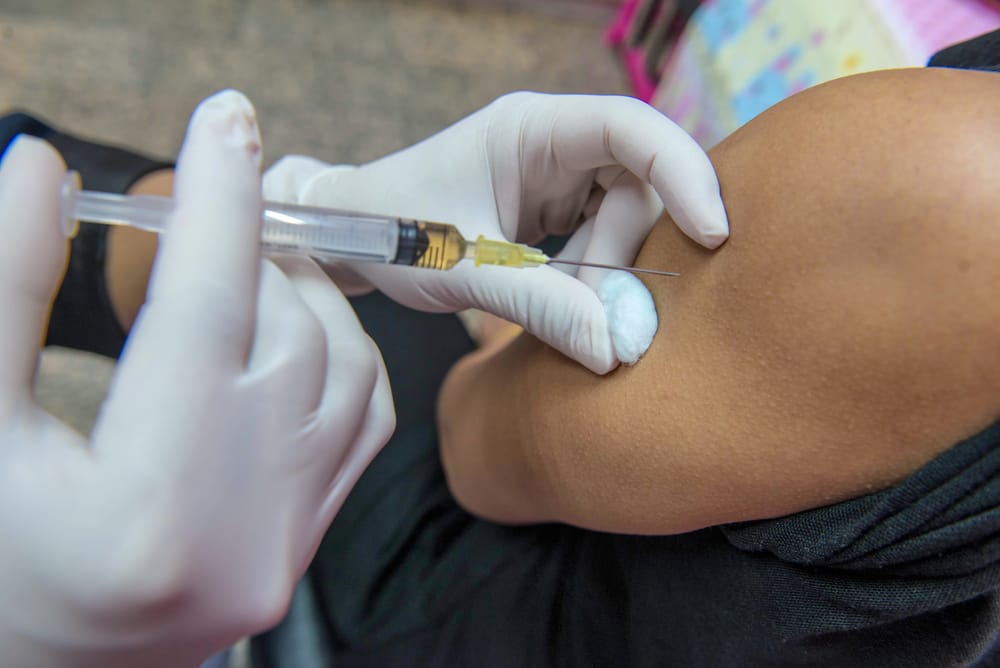Contents:
- Medical Video: How we conquered the deadly smallpox virus - Simona Zompi
- Era before the vaccine
- Edward Jenner, cowpox, and variola
- How is dr. Jenner got the idea for a vaccine?
- Why is it called a vaccine?
- Success in preventing various diseases throughout the world
Medical Video: How we conquered the deadly smallpox virus - Simona Zompi
Vaccines are one of the most important prevention of diseases that are easily transmitted. Many vaccines have been produced to prevent you from getting sick. But do you know how the origin of the vaccine was found?
Era before the vaccine
The term new vaccine was known in 1796 when the first smallpox vaccine was found. Before that, efforts to prevent infection by a disease had been carried out since ancient Greece, 429 BC. At that time, a Greek historian discovered that people who had recovered from smallpox had never been infected with smallpox for the second time.
In 900, the Chinese discovered an ancient form of vaccination, namely variolation. Variation is the process of transferring smallpox virus from smallpox sufferers to healthy people, with the aim of preventing smallpox infection. Variolation began to spread to European soil in the 18th century when there was a smallpox outbreak. With variolation, the mortality rate from smallpox can be reduced at that time.
Edward Jenner, cowpox, and variola
The first vaccine made is for variola or smallpox which is made to prevent highly deadly variola disease. The vaccine was made by a doctor named Edward Jenner in Berkeley in a rural area in England in 1796.
By taking pus from cowpox lesions from the hands of a milkmaid, Dr. Jenner transmitted an 8-year-old boy, James Phipps, with a cowpox virus. Six weeks later Dr. Jenner variolated (the process of removing pus from an active lesion of someone with variola, to the arm of another person who is healthy using a needle) to 2 points on Phipps' arm with the variola virus.
As a result, it turned out that the boy was not infected with variola and remained healthy even though the variolation procedure was repeated for the second time.
How is dr. Jenner got the idea for a vaccine?
The interesting thing is how can a doctor living in the countryside find a concept about vaccines in the midst of limited facilities? At first Dr. Jenner pays attention to the local population whose majority are livestock farmers. Those who milk cows are often infected by cowpox (cow pox) which causes pustular lesions to appear on the hands and arms.
It turned out that those who had been infected with cowpox became immune to variola infections which at that time occurred variola outbreaks in the village. With this experience, Dr. Jenner began the first clinical research in the world. The study produced an alternative to variolation that had been carried out in Asia in the 1600s and in Europe and America in the early 1700s.
Why is it called a vaccine?
The term vaccine is used by Dr. Jenner because this substance comes from cowpox, where cows in Latin are vacca. The term vaccine refers to the variola vaccine until in 1885 Louis Pasteur, a chemist, invented a vaccine for rabies. Since then, the term vaccine has become more common, namely the suspension of microorganisms that have been weakened or deactivated, which function to induce immunity and prevent infection from an illness.
Success in preventing various diseases throughout the world
Since then, vaccines have continued to develop and become one of the main pillars to prevent infectious diseases. One of the biggest signs of vaccine success was when WHO succeeded in eliminating smallpox by extending the coverage of smallpox vaccination to the whole world in 1956.
In 1980 finally smallpox was declared eradicated, one of the greatest achievements of the medical world. In addition to smallpox, several other diseases have been found in vaccines such as measles, polio, pertussis, diphtheria, and tetanus.
Looking at history, the purpose of making vaccines is nothing but to save humanity from deadly infectious diseases such as smallpox. Do not let because of negligence and unclear information make us afraid to vaccinate.












